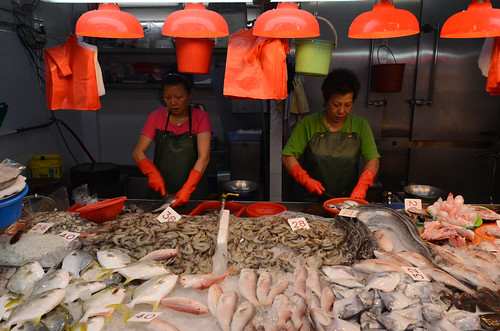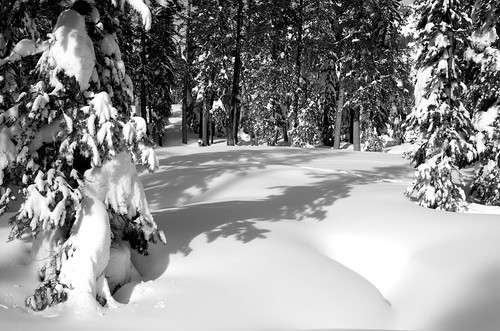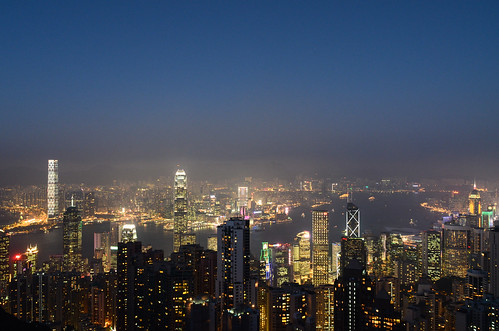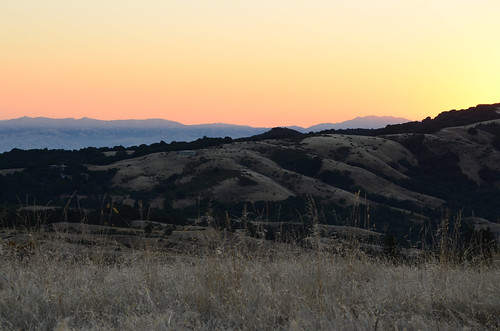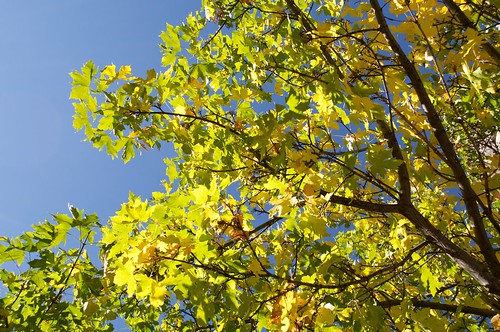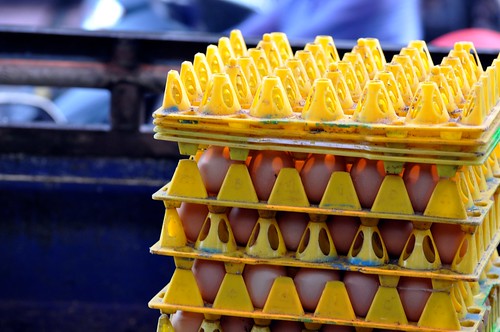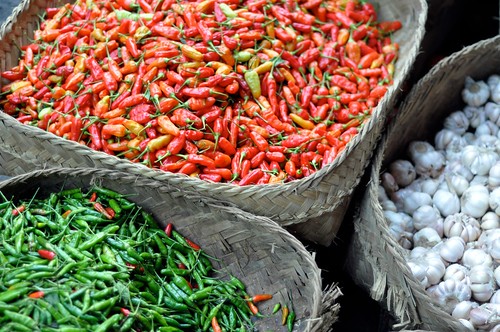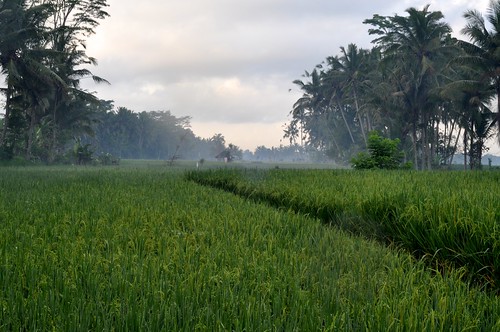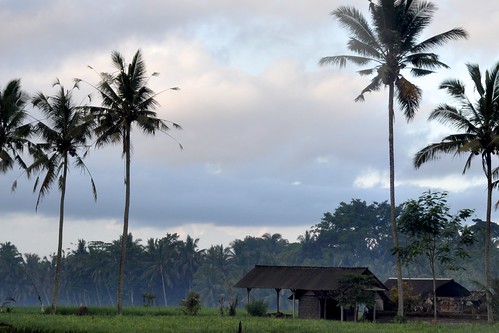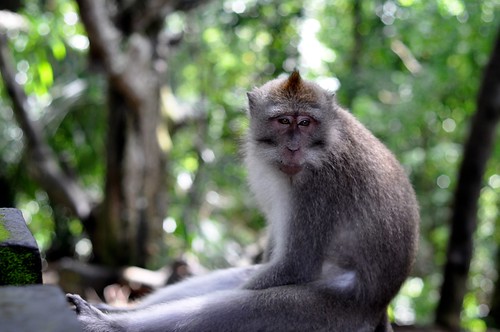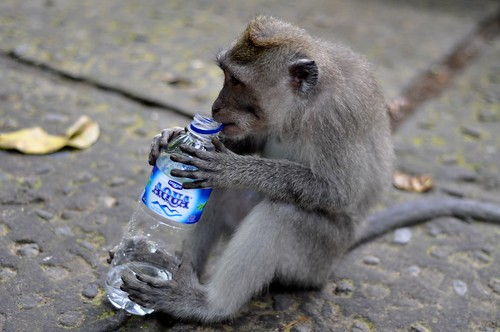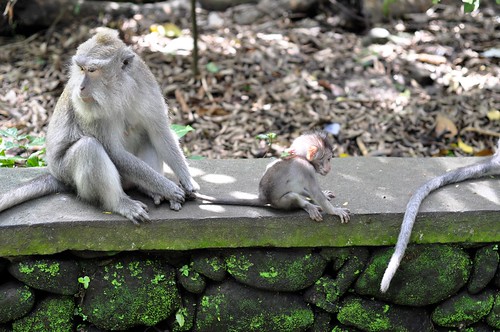Around Ubud
On my second day in Ubud, I actually set an alarm to make sure I woke up early. I wanted to head to the local market early, when the locals were in full force, when they were selling vegetables, fruit and meat, before they switched to Bintang shirts and handicrafts of dubious quality. In other words, get there when no other tourists were there.
I got to the market by 6:15 and it was packed with vendors selling chickens, crates of eggs, vegetables I'd never seen before, all kinds of fruit and raw spices, flowers for offerings as well as fresh and dried fish. In Balinese spice recipes, there are almost always four roots that are used: turmeric (it looks weird in it's root form - kind of like ginger), ginger, lesser galangal and greater galangal. I've never heard of galangal before, but it's a root in the ginger family. The lesser and greater varieties definitely taste different too.
Once I had wandered around the market enough, I took off for the stereotypical Ubud visitor activity: go to some rice fields at dawn. Many also go at sunset, but it had been raining a lot in the evenings, so I figured dawn would have better luck. I was rewarded with great views.
If you've ever been to Bali, you won't have forgotten the constant question, "Massage?" that you get in almost all tourist places. I'd so far ignored all those offers. However, based on the recommendation of an Aussie girl I'd met the previous day at Ibu Oka, I decided to try a Balinese massage for only my third massage ever (I'd previously gotten massages in Thailand [maybe $5 for an hour] and Wildflower [free] - can you tell I'm cheap?). She had found a place that wasn't sketchy, didn't have a presence along the main roads, and so didn't do the standard practice of "Massage?"-ing, and only cost about $10 USD for an hour. It was definitely worth it. Balinese massage uses oil that the masseuse rubs into your arms, legs, shoulders and neck, in very calculated patterns.
The hour left me extremely relaxed and hungry, and since I was close to Ibu Oka, I went a second time. Again, it didn't disappoint.
In the middle of Ubud is a big forest reserve known as the Sacred Monkey Forest. And what reserve named after monkeys wouldn't be complete without a troupe of wild monkeys ready to steal food and water bottles from gleeful tourists? At least not this one. Upon entering, you can buy bananas to feed the "hungry monkeys" that every other person who enters also feeds. My advice (which I also followed) is to not purchase the bananas. The monkey stewards give them sweet potatoes several times a day, and the other tourists provide enough bananas to keep the monkeys fat for years to come. Save your Rupiah for massages or babi guling.
None-the-less, it was fun to watch the monkeys chase each other around and play in a fountain in the middle of the forest. They'd do cannonballs into it (seriously) and one monkey loved doing forward twists when jumping off things (think about jumping forward, twisting around your body's axis, and landing on your feet again, but while your body is more parallel to the ground). In fact, while sitting watching the monkeys, that one monkey did a forward twist off me when he jumped off the tree behind me, bounced off my shoulder and did a twist before landing on the ground running to the fountain. It was all pretty entertaining.
Plus I got to see that even monkeys embarrass their children by using leashes. The only difference with us is that the monkeys have built in leashes.










